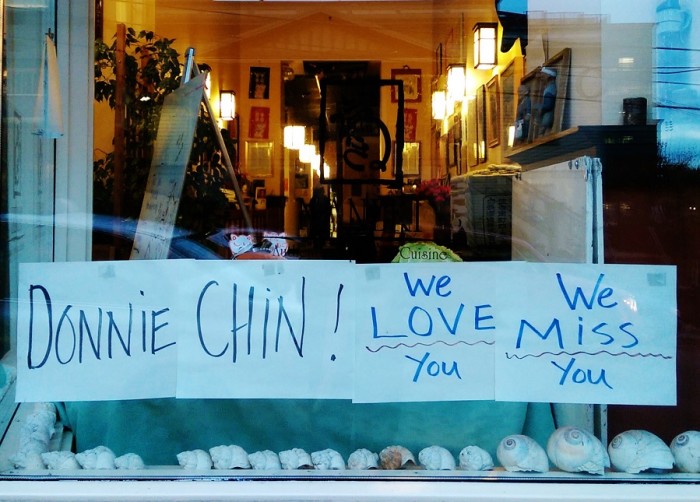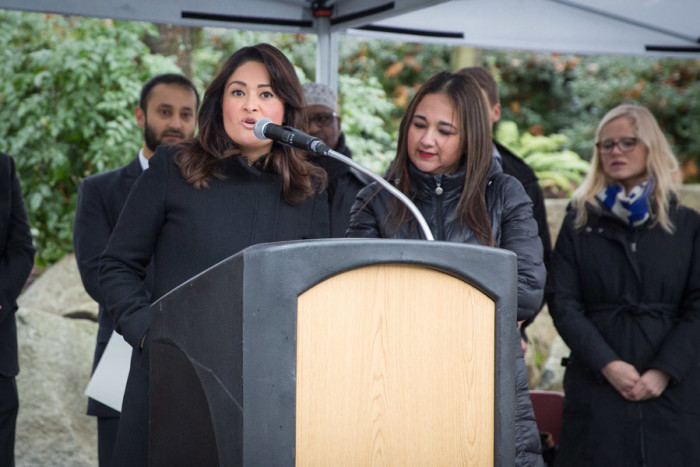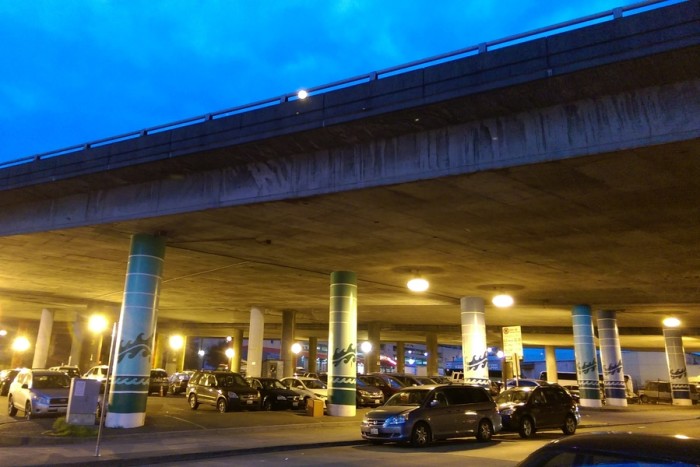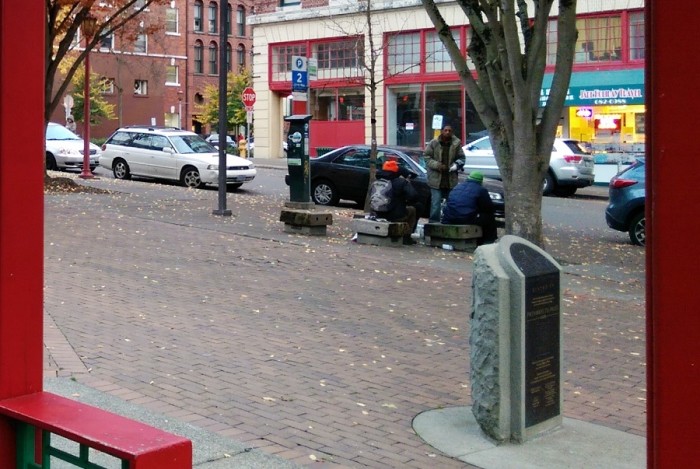
Most of Seattle’s newly elected city council members will be resting on their laurels until they take office in January. But not Lorena Gonzalez.
After handily winning the race for citywide Council Position Nine — the seat vacated when Sally Clark resigned in April — Gonzalez will be sworn in today at 5p.m. to replace temporary Council Member John Okamoto.
It couldn’t come soon enough for some in the Chinatown-International District (C-ID), who have been waiting for answers on public safety issues facing their neighborhood and are looking to the new council to make changes.
Gonzalez talked up the issue during her campaign, and even held her final campaign event in the ID — so there’s some hope she could be catalyst for the change this community has been waiting for.
Sokha Danh, economic development specialist of Seattle Chinatown International District Preservation and Development Authority (SCIDpda) says the neighborhood is currently underserved by the city, and would like to see their public safety concerns addressed more deliberately.
He shared 35 letters that different local organizations and businesses sent to the City recently indicating as much. The letters talk about late-night noise, street racing, 911 response times, even exploding cars.
One letter, from a staff member at Legacy House, a SCIDpda owned assisted living facility back in May, ominously warned, “The night party is not just noise pollution anymore, [and] it’s becoming more dangerous as it may begin to involve things like fire and possibly even guns. We fear.”
Two months later, community leader Donnie Chin was fatally shot and killed, while he was making his regular rounds patrolling the neighborhood.

“The murder of Donnie Chin especially highlighted the area’s issue,” Gonzalez told me in an interview earlier this month.
So what can she, and the rest of the city government do to help?
1) Solve Donnie Chin’s murder
Four months after Chin’s death, the police have yet to identify the killer. Many in the C-ID want to see the investigation prioritized and settled soon. They see the slow-moving investigation as disrespectful to Chin’s death.
“Communities in the C-ID deserve more answers revolving around Donnie Chin’s death,” agreed Gonzalez. “Many neighborhood members may feel like the investigation is taking much too long.”
But the Seattle Police Department (SPD) said it takes Chin’s case as seriously as all other cases.
“Chin was well known to the SPD, so he is important to us,” said police Sgt. Sean Whitcomb, public affairs director of SPD. “This is not a cold case. It’s an active case. It’s a work in progress.”
2) Unite the C-ID under one police precinct
I-5 runs through the middle of the C-ID, and divides it into two separate police districts: Chinatown on the west side of the freeway and Little Saigon on the east side.
Both precincts have tailored micro-plans, and they are designed so community members can communicate with SPD about what they need, said Whitcomb.
But letters from local business owners urge that the neighborhood should be policed under one precinct to ensure limited police resources are used in the best possible way, wrote KOBO owners John and Binko Bisbee in a September letter.
The entire neighborhood faces similar circumstances involving linguistic barriers, demographics and populations, said Danh. Holding two separate public safety meetings for both precincts may be counterintuitive and restrict partnerships that could otherwise be built.
Moreover, Chinatown is represented by Council Position Two (Bruce Harrell’s district), but Little Saigon is represented by Council Position Three (Kshama Sawant’s). For the sake of unity, perhaps citywide a representative like Gonzalez can best address the issues.

3) Bring a tangible police presence
Letters indicate that the community would like SPD officers to be better relocated, allocated and positioned throughout the C-ID. There is a sense that the SPD is not making enough effort to establish authentic relationships with the community.
“The ID is a hotspot for safety issues, yet there is little visibility of police presence in our neighborhood,” wrote the Bisbees, in September.
Also, a majority of C-ID crime occurs after sundown, wrote Chong Wa Benevolent Association president Sue-May Eng. But when they requested a night beat patrol, the SPD only provided day patrols.
“It is very discouraging when 911 calls have a slow or non-response,” wrote Eng, in September.
Gonzalez said she would look into this issue.
“I will be hopefully asking the Seattle Police Department to dig into a strong outreach plan,” said Gonzalez. “This includes getting cops out of their cars, onto the streets and checking in with businesses.”
4) Expand mental health and human services
Community letters express the need for a new approach to bring mental health and human services to the drug-addicted and homeless populations in the neighborhood. An outsized portion of King County’s estimated 3772 homeless people live in the neighborhood — one letter writer estimated that more than 7% of those sleeping outside county-wide were concentrated in the C-ID.
Furthermore, Seattle’s new 9 ½ Block Strategy, meant to remove drug deals from the Downtown core, displaced many homeless people to the C-ID, according to Wing Luke Museum executive director Beth Takekawa in a September letter.
“We need the City to help the large number of mentally ill people that roam our streets and sleep under our bridges and doorways,” wrote Tai Tung Restaurant owner Harry Chan, in September. “Please stop drug dealers and addicts from coming into our neighborhood.”
Whitcomb responds that the SPD’s deployment plans are ultimately based on equality, and that all precincts should have staffing levels that match the workload.

5) Take on the cultural barriers to crime reporting
Community letters express concerns regarding the lack of access residents have to both multi-lingual and multi-cultural outlets for reporting emergencies
C-ID apartment owner Diane King points out that many are elderly and speak English as a second language. Both language barriers and perceived intimidations obstruct residents from seeking police help in conventional ways.
The SPD has an Asian Crime Prevention Liason, Linh Thach, but he primarily works with community education, said Whitcomb. It’s not like he’s answering the phone when people call 911.
“Calling 911 is as close as a phone call,” wrote King, in September, “but to our neighborhood it is a giant obstacle.”
As Gonzalez points out, “public safety cannot be fixed overnight.” But International District residents say they’ve been waiting for a long time, and they’re ready for a change. Maybe a fresh city council makeup can provide that.
“I intend to do the outreach necessary to help protect the Chinatown-International District community,” Gonzalez said. “And I intend on taking the time we need to get it right.”

